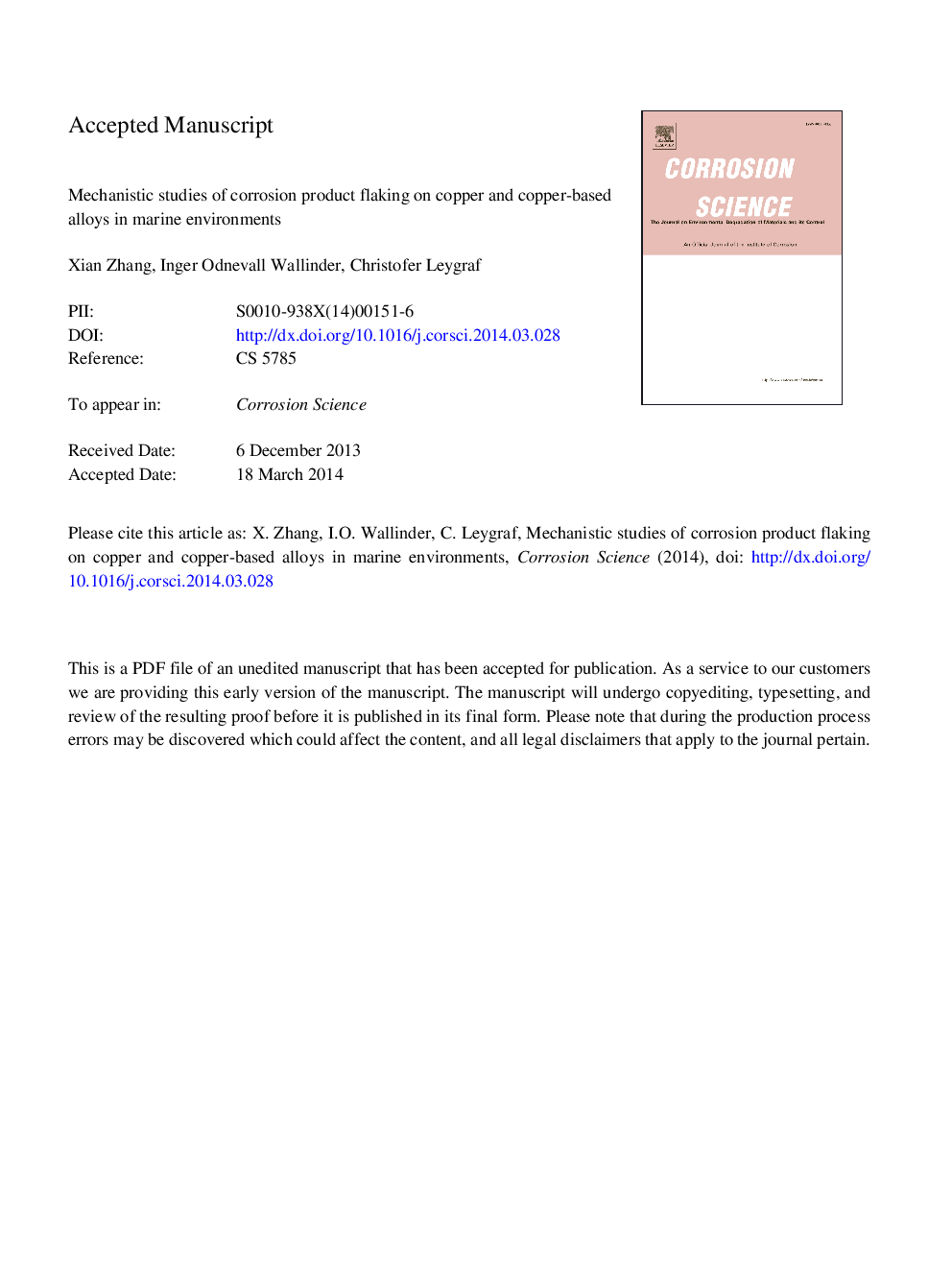| Article ID | Journal | Published Year | Pages | File Type |
|---|---|---|---|---|
| 7895641 | Corrosion Science | 2014 | 28 Pages |
Abstract
The mechanism of corrosion product flaking on bare copper sheet and three copper-based alloys in chloride rich environments has been explored through field and laboratory exposures. The tendency for flaking is much more pronounced on Cu and Cu-4Â wt%Sn than on Cu-15Â wt%Zn and Cu-5Â wt%Al-5Â wt%Zn. This difference is explained by the initial formation of zinc and zinc-aluminum hydroxycarbonates on Cu15Zn and Cu5Al5Zn, which delays the formation of CuCl, a precursor of Cu2(OH)3Cl. As a result, the observed volume expansion during transformation of CuCl to Cu2(OH)3Cl, and concomitant corrosion product flaking, is less severe on Cu15Zn and Cu5Al5Zn than on Cu and Cu4Sn.
Related Topics
Physical Sciences and Engineering
Materials Science
Ceramics and Composites
Authors
Xian Zhang, Inger Odnevall Wallinder, Christofer Leygraf,
